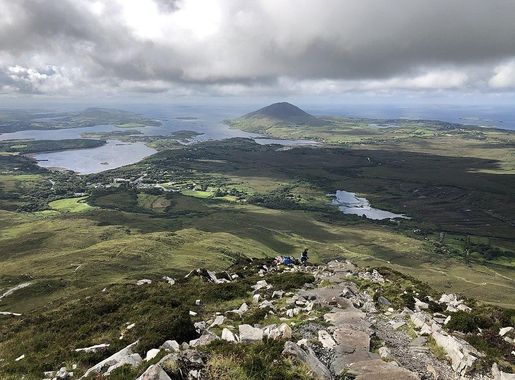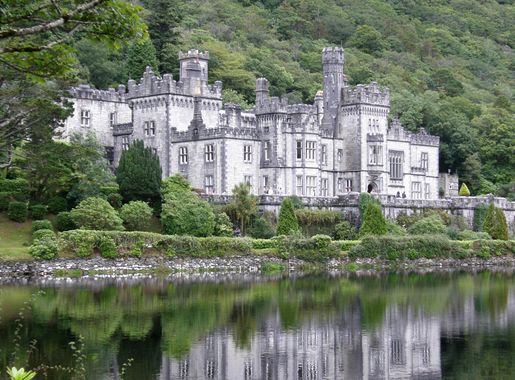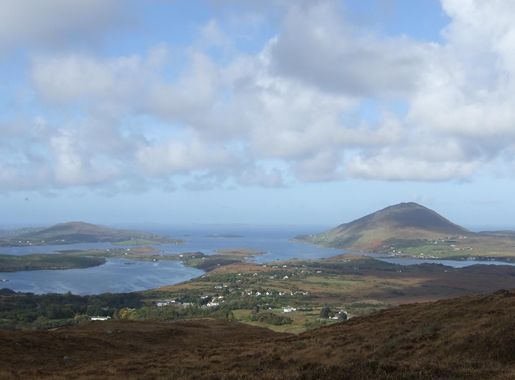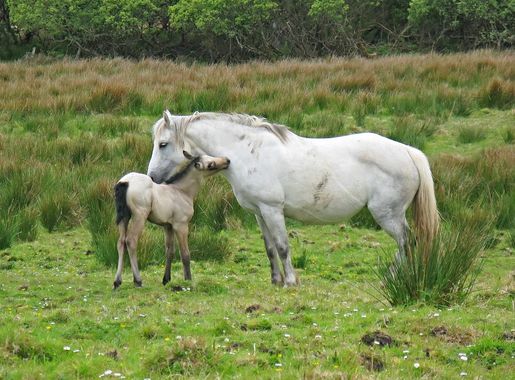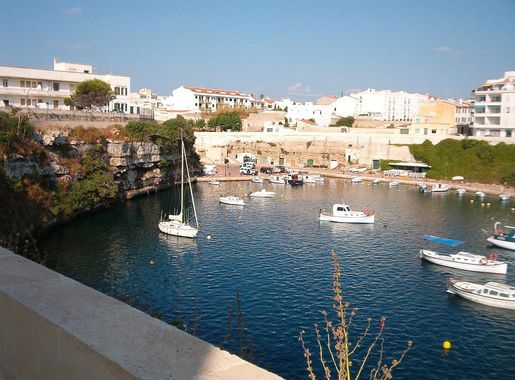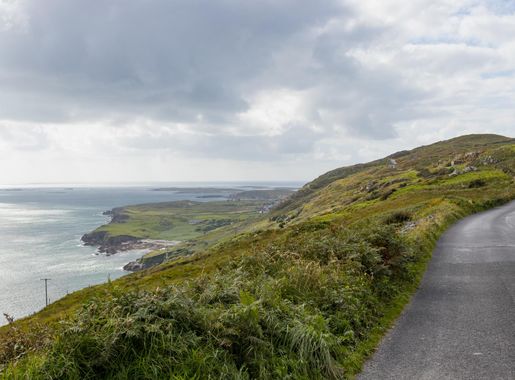
The Untamed Beauty of Connemara National Park
Explore Connemara National Park in Ireland: A stunning landscape of mountains, bogs, and woodlands teeming with wildlife and rich in cultural history.
Connemara National Park, located in County Galway, Ireland, is a haven for nature lovers and adventure seekers alike. The park spans nearly 3,000 hectares of unspoiled terrain, featuring rugged mountains, serene grasslands, and picturesque woodlands. One of the park's highlights is the Twelve Bens mountain range, offering challenging hikes and breathtaking panoramic views. Visitors will be mesmerized by the diverse flora and fauna that thrive in Connemara. The park is home to a variety of wildlife, including the famous Connemara ponies, red deer, and a multitude of bird species. The bogs and heaths are a botanist's dream, with rare plants and flowers dotting the landscape. For those interested in history and culture, Connemara National Park does not disappoint. The park has several archaeological sites, including megalithic tombs and 19th-century farmhouses. The visitor center provides insightful exhibits and information about the park's natural and cultural heritage, making it an educational experience for all ages.
Local tips in Connemara National Park
- Wear sturdy hiking boots and bring rain gear. The weather can be unpredictable.
- Visit the park's visitor center first to get maps and learn about the trails.
- Pack a picnic. There are lovely spots to sit and enjoy a meal amidst nature.
- Keep an eye out for the Connemara ponies. They are a unique feature of the park.
- Consider visiting in the early morning or late afternoon for the best light for photography.
The Untamed Beauty of Connemara National Park
Connemara National Park, located in County Galway, Ireland, is a haven for nature lovers and adventure seekers alike. The park spans nearly 3,000 hectares of unspoiled terrain, featuring rugged mountains, serene grasslands, and picturesque woodlands. One of the park's highlights is the Twelve Bens mountain range, offering challenging hikes and breathtaking panoramic views. Visitors will be mesmerized by the diverse flora and fauna that thrive in Connemara. The park is home to a variety of wildlife, including the famous Connemara ponies, red deer, and a multitude of bird species. The bogs and heaths are a botanist's dream, with rare plants and flowers dotting the landscape. For those interested in history and culture, Connemara National Park does not disappoint. The park has several archaeological sites, including megalithic tombs and 19th-century farmhouses. The visitor center provides insightful exhibits and information about the park's natural and cultural heritage, making it an educational experience for all ages.
When is the best time to go to Connemara National Park?
Iconic landmarks you can’t miss
Kylemore Abbey & Victorian Walled Garden
Discover the blend of history, architecture, and nature at Kylemore Abbey and its stunning Victorian Walled Garden in Co. Galway.

Dunguaire Castle
Experience the enchanting Dunguaire Castle, a medieval fortress on Galway Bay, rich in history and stunning views, perfect for every traveler.
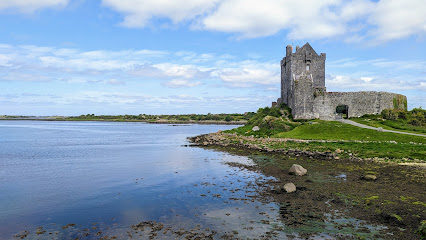
Galway Atlantaquaria
Explore Ireland's largest aquarium at Galway Atlantaquaria, a captivating family-friendly destination showcasing the beauty of marine life and ocean conservation.
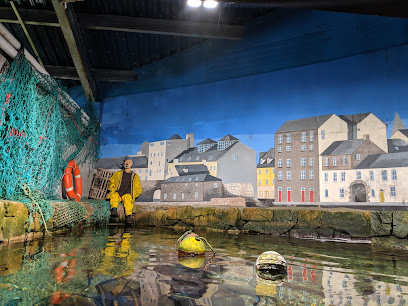
Connemara National Park Visitor Centre
Discover the natural beauty of Connemara at the Visitor Centre, your gateway to breathtaking landscapes, scenic trails, and rich wildlife.
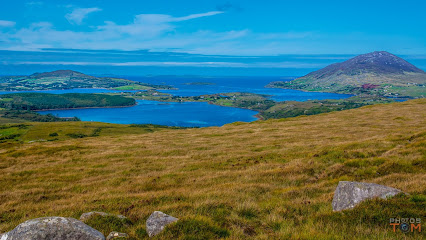
Rock of Dunamase
Discover the awe-inspiring Rock of Dunamase, a historical landmark in County Laois, where rich history meets stunning landscapes.
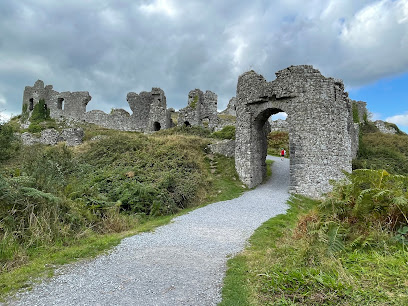
Dog's Bay
Discover the breathtaking beauty of Dog's Bay, a serene public beach in Co. Galway, perfect for relaxation and adventure amidst stunning coastal scenery.
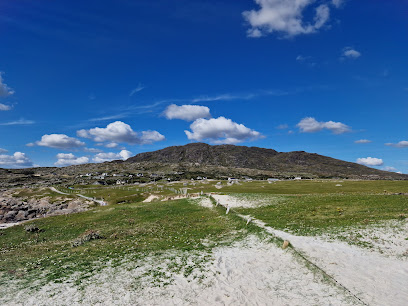
Aasleagh Falls
Discover the breathtaking beauty of Aasleagh Falls in Co. Mayo, where cascading waters and lush landscapes create an unforgettable natural experience.
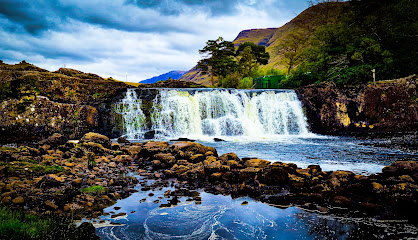
Coole Park
Experience the serene beauty and rich literary heritage of Coole Park in County Galway, a perfect destination for nature lovers and history enthusiasts alike.
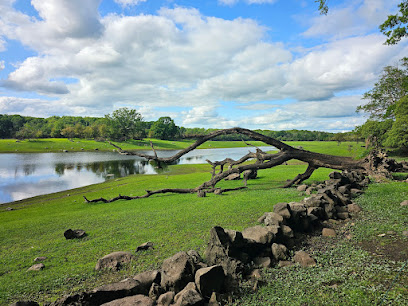
Ballynahinch Castle
Discover the enchanting Ballynahinch Castle, where history meets luxury in the heart of Connemara, surrounded by breathtaking landscapes and rich heritage.

Barna Woods
Explore the serene beauty of Barna Woods in Galway, a national forest perfect for nature walks, wildlife encounters, and peaceful retreats.
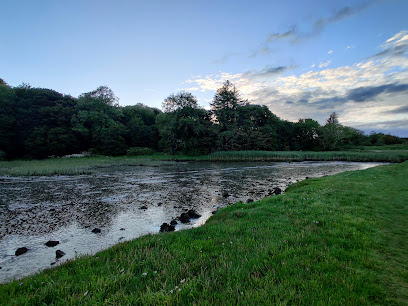
Aughnanure Castle
Explore Aughnanure Castle, a captivating historical landmark in County Galway, Ireland, showcasing medieval architecture and rich heritage amidst stunning landscapes.
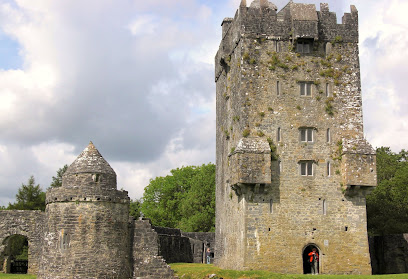
Abbeyglen Castle Hotel
Discover the enchanting Abbeyglen Castle Hotel, a luxurious retreat in Connemara, blending history, comfort, and stunning landscapes for a memorable stay.

Ballycroy Visitor Centre - Wild Nephin National Park
Explore the breathtaking beauty of Wild Nephin National Park at Ballycroy Visitor Centre, a must-see destination for tourists in County Mayo.
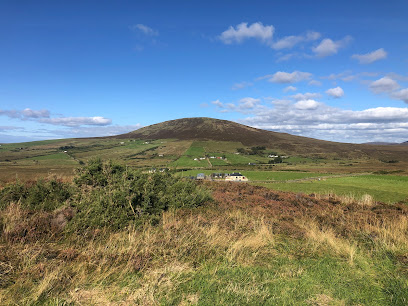
Rinville Park
Experience the serene landscapes and magical fairy forest of Rinville Park, a picturesque retreat in County Galway perfect for nature lovers.
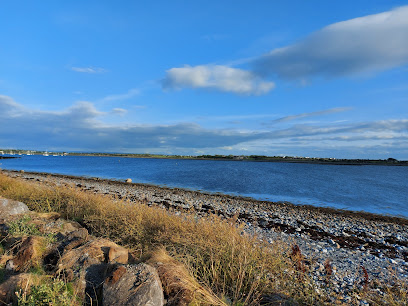
Coole Park Nature Reserve
Discover the enchanting beauty and rich history of Coole Park Nature Reserve, a tranquil retreat for nature lovers in County Galway, Ireland.
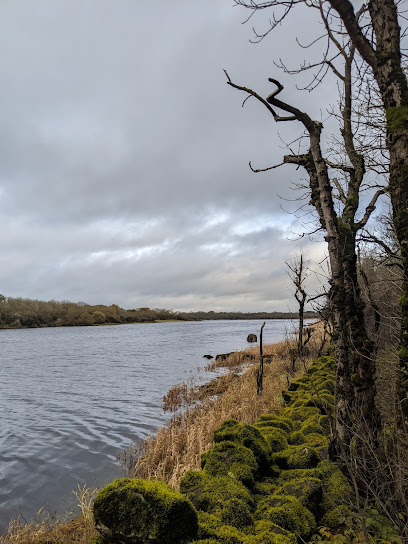
Unmissable attractions to see
Walled Victorian Garden
Explore the Walled Victorian Garden in Dublin, a serene park featuring vibrant floral displays, historical charm, and a delightful pig farm.
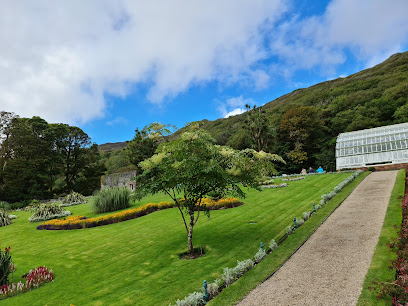
Achill Island
Discover Achill Island, a breathtaking coastal paradise in Co. Mayo, featuring stunning landscapes, rich heritage, and thrilling outdoor adventures.
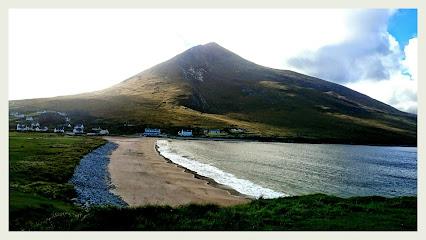
Connemara Sheep and Wool Centre
Discover the heart of Irish wool crafting at the Connemara Sheep and Wool Centre, where tradition meets breathtaking landscapes in Co. Galway.
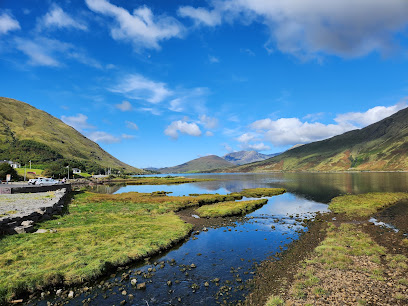
Diamond Hill
Discover the stunning landscapes and panoramic views of Diamond Hill, a must-visit hiking destination in Connemara, County Galway, Ireland.
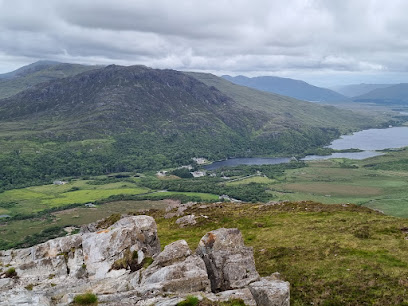
Renvyle Beach
Discover Renvyle Beach in County Galway—where golden sands meet the wild Atlantic, offering adventure, relaxation, and stunning coastal views.

Glengowla Mines
Discover Glengowla Mines in Co. Galway: A captivating blend of mining history, farm experiences, and local crafts await your exploration.
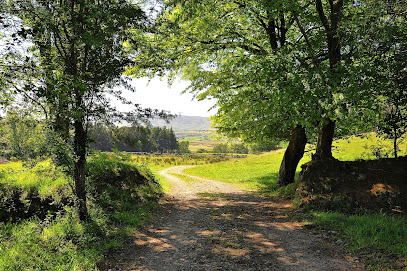
Connemara Heritage & History Centre
Discover the rich heritage of Connemara at the Heritage & History Centre, where culture, history, and stunning landscapes come together.

Aran Sweater Market
Explore the Aran Sweater Market for authentic Irish wool garments, unique gifts, and a glimpse into the rich heritage of the Aran Islands.
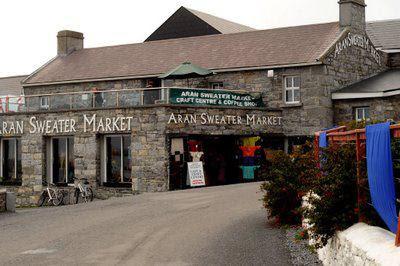
DK Connemara Oysters
Discover the exquisite taste of fresh oysters at DK Connemara Oysters, where sustainable aquaculture meets breathtaking coastal views in County Galway.
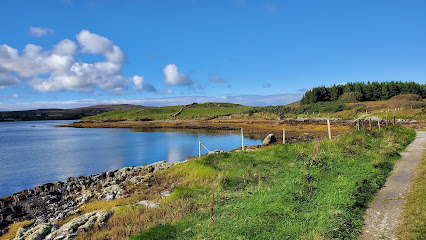
Eyrephort Beach
Discover Eyrephort Beach: A stunning coastal paradise in Co. Galway, perfect for relaxation, outdoor adventures, and breathtaking landscapes.
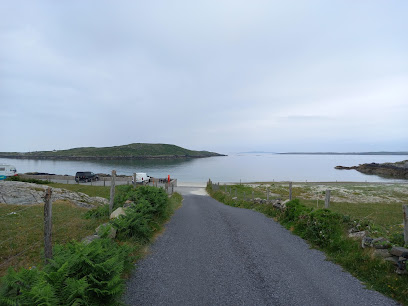
Omey Beach
Experience the breathtaking beauty and tranquility of Omey Beach, a hidden gem along Ireland's Wild Atlantic Way, perfect for relaxation and outdoor adventures.

Clew Bay Heritage Centre CLG
Explore the rich history and culture of Clew Bay at the Clew Bay Heritage Centre in Westport, a must-visit for heritage enthusiasts.
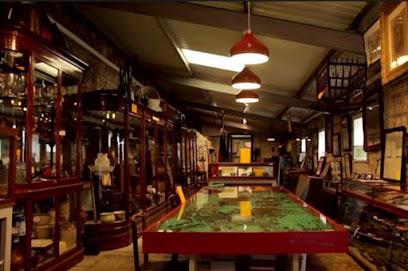
Lettergesh Beach
Experience the serene beauty of Lettergesh Beach in Co. Galway, a hidden gem perfect for relaxation, adventure, and breathtaking coastal views.
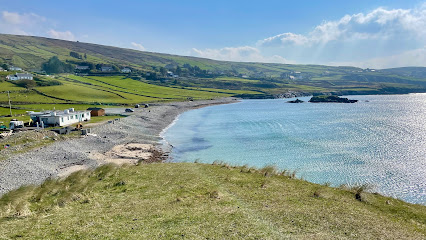
Islands Viewing Point
Experience the stunning vistas of Islands Viewing Point in Co. Galway, a serene escape showcasing Ireland's natural beauty and rich heritage.
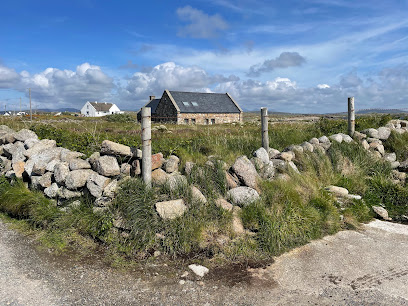
The Whitethorn Gallery
Discover the artistic charm of The Whitethorn Gallery in Clifden, showcasing contemporary artwork from local and national artists in a serene setting.
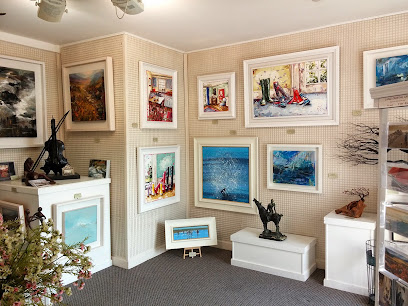
Essential places to dine
Guys Bar Clifden
Discover Guys Bar Clifden: A premier gastropub serving exquisite local cuisine and drinks in the heart of picturesque Clifden.

Connemara Coast Hotel
Discover luxury and stunning views at Connemara Coast Hotel – your gateway to exploring the beauty of Co. Galway.
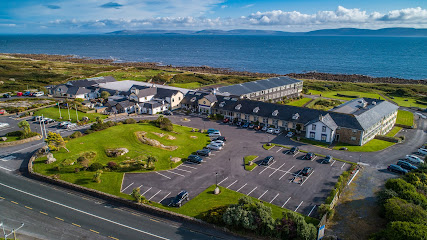
Veldons Seafarer Bar & Restaurant
Experience authentic Irish hospitality at Veldons Seafarer Bar & Restaurant in Letterfrack—where local flavors meet breathtaking landscapes.

Abbeyglen Castle Hotel
Discover the charm of Abbeyglen Castle Hotel in Connemara – where luxury meets history amidst breathtaking landscapes.

Mitchell's Restaurant
Discover fresh seafood delights at Mitchell's Restaurant in Clifden, where every dish tells a story of Galway's rich maritime heritage.

Lowry's Music & Whiskey Bar
Discover authentic Irish culture at Lowry's Music & Whiskey Bar in Clifden - enjoy live music and exceptional whiskey in a warm atmosphere.
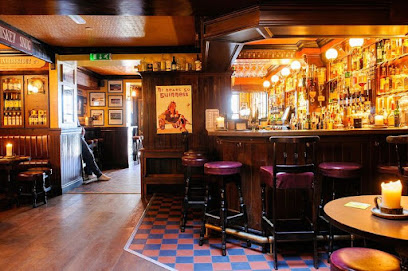
Delphi Resort
Discover adventure and tranquility at Delphi Resort in Co. Galway - your perfect getaway surrounded by nature's beauty.
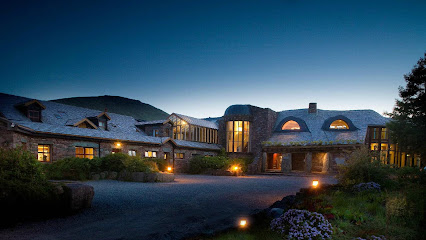
O'Dowd's Seafood Bar and Restaurant
Experience the best of Irish coastal cuisine at O'Dowd's Seafood Bar and Restaurant in Roundstone – where fresh seafood meets local charm.
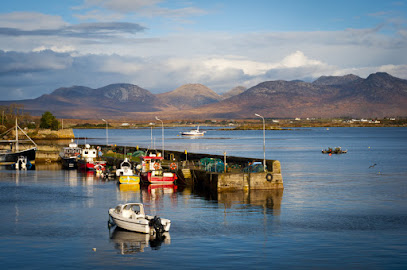
John J. Burke's Bar & Restaurant , Tí Bhúrca, Clonbur. Co Galway
Experience authentic Irish hospitality at John J. Burke's Bar & Restaurant in Clonbur – where tradition meets great food.
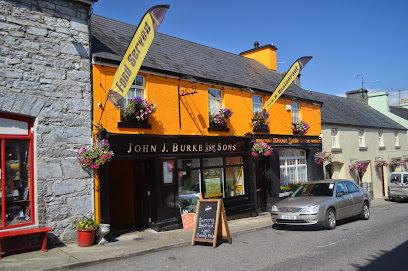
Olivers Seafood Bar
Experience exquisite seafood dining at Olivers Seafood Bar in Cleggan, where fresh catches meet stunning coastal views.
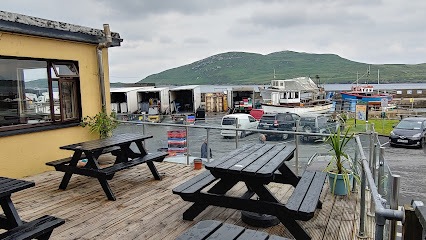
Renvyle House Hotel & Resort
Experience luxury and nature at Renvyle House Hotel & Resort - your perfect getaway in Connemara's stunning landscapes.

Misunderstood Heron
Discover the flavors of Co. Galway at Misunderstood Heron - where local ingredients meet creative culinary artistry in a stunning setting.
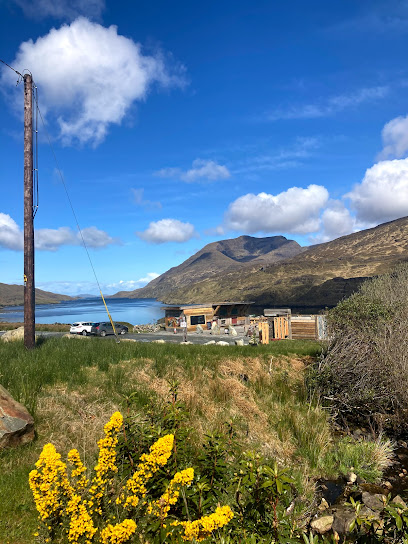
Bláth Fiáin
Savor authentic Irish flavors at Bláth Fiáin Bistro in An Spidéal – where local ingredients meet culinary creativity.
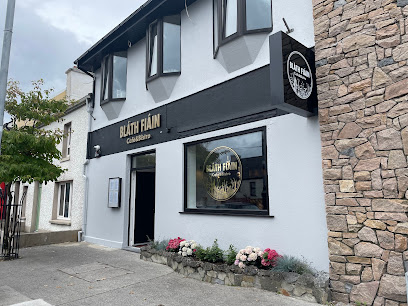
Connemara Greenway Restaurant
Experience authentic Irish cuisine at Connemara Greenway Restaurant amidst the stunning landscapes of Oughterard.
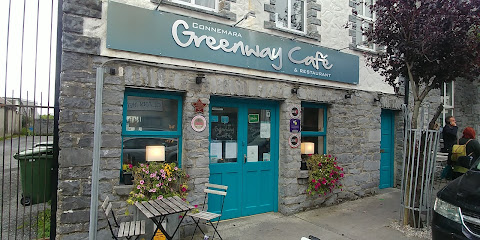
Ardagh Hotel & Restaurant
Discover luxury and breathtaking views at Ardagh Hotel & Restaurant - where exquisite Irish cuisine meets stunning Connemara landscapes.
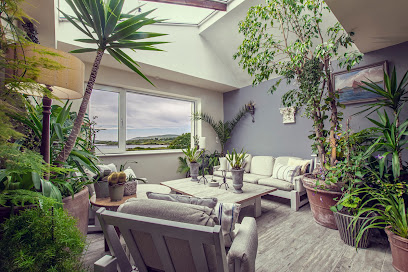
Markets, malls and hidden boutiques
Connemara Sheep and Wool Centre
Experience the charm of the Connemara Sheep and Wool Centre, where Irish heritage meets exquisite wool craftsmanship amidst stunning landscapes.
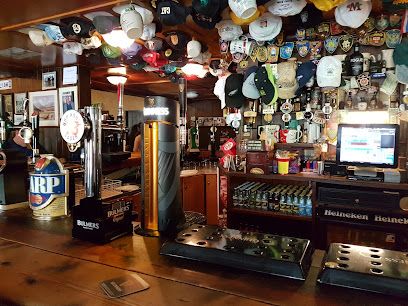
Letterfrack Country Shop
Explore fresh local produce and unique Irish crafts at Letterfrack Country Shop, your essential stop in County Galway.
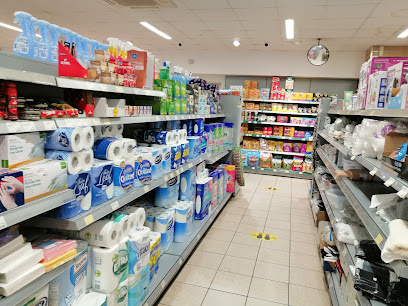
Joyce's Craftshop
Explore Joyce's Craftshop in Co. Galway for unique handmade jewelry and local crafts that embody the spirit of Ireland.
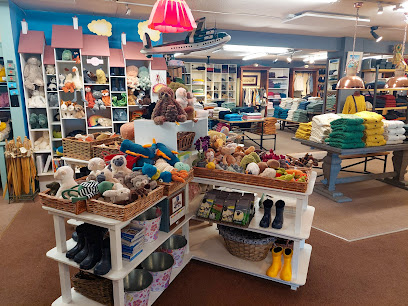
Ohh! By Gum
Explore Ohh! By Gum in Clifden, Co. Galway for unique gifts and clothing that celebrate Irish craftsmanship and culture.
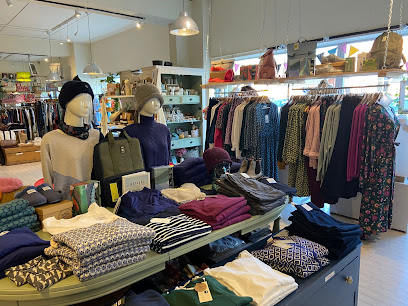
Cottage Handcrafts
Explore Cottage Handcrafts in County Galway for unique, handcrafted Irish gifts and textiles that capture the essence of Irish culture.
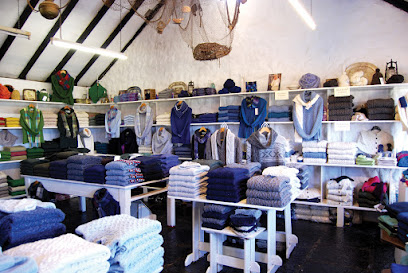
Connemara Hamper
Explore the finest organic produce and artisanal delights at Connemara Hamper in Clifden, Co. Galway, your go-to destination for gourmet food.
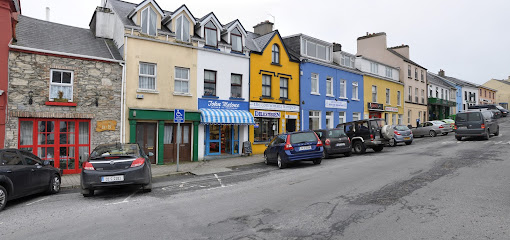
Spar
Discover Spar in Clifden for a delightful grocery shopping experience with local products and friendly service, perfect for tourists and locals alike.
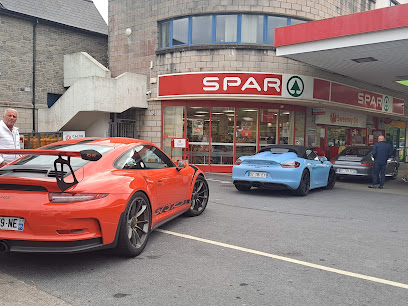
Lowry's Sweater and Gift Shop - Irish Gift Shop Of The Year
Explore Lowry's Sweater and Gift Shop in Clifden for authentic Irish gifts, cozy sweaters, and timeless fashion accessories that capture the spirit of Ireland.
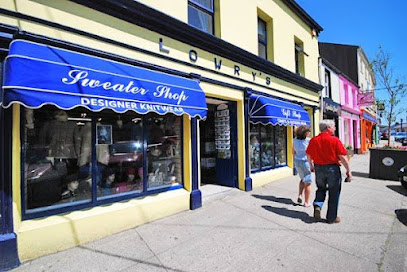
All Things Connemara
Explore Clifden's All Things Connemara: A unique gift shop and bicycle rental service in the heart of Connemara's stunning landscapes.
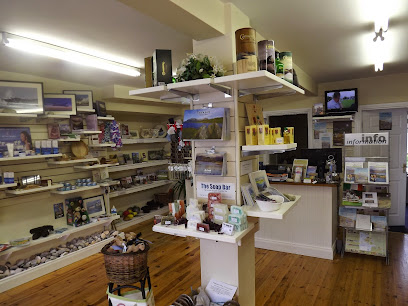
Connemara Blue
Discover a treasure trove of artistic handicrafts at Connemara Blue, an art studio and gift shop in Clifden, Co. Galway, where creativity meets Irish charm.
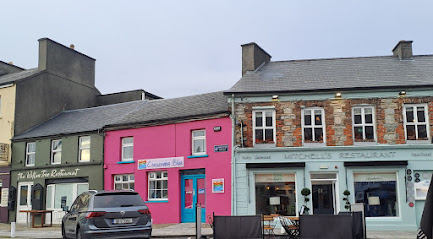
Stanley & Sons
Discover stylish clothing and shoes at Stanley & Sons, a family-run store in Clifden, Co. Galway, perfect for all lifestyles.

Conn O'Mara
Explore Conn O'Mara, a charming craft store in Clifden offering exquisite handmade goods and unique souvenirs that capture the essence of Irish artistry.
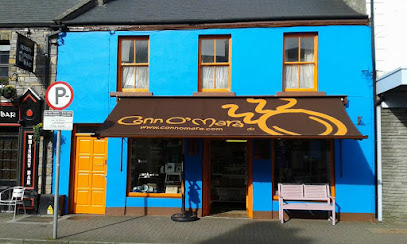
Hehirs Of Clifden
Discover Hehirs Of Clifden, where local fashion meets the heart of Ireland in an unforgettable shopping experience.

King's Paper & Gift Shop
Discover a treasure trove of toys and gifts at King's Paper & Gift Shop in Clifden, the perfect stop for families and gift-seekers alike.
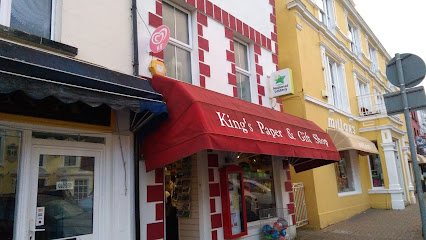
Love Vintage
Explore unique vintage finds at Love Vintage, a charming clothing store in the heart of Clifden, Co. Galway, where timeless fashion meets sustainability.
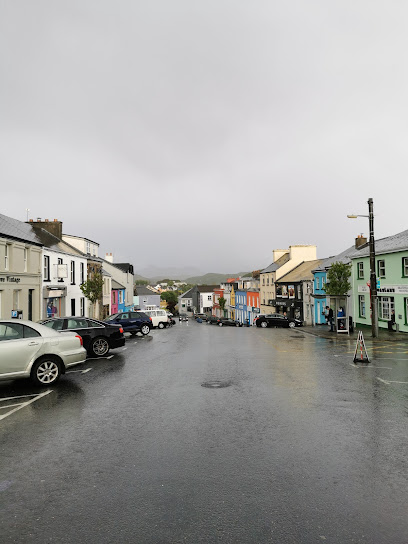
Essential bars & hidden hideouts
Guys Bar Clifden
Experience the best of Irish gastropub culture at Guys Bar Clifden, where traditional flavors meet contemporary dining in a vibrant atmosphere.
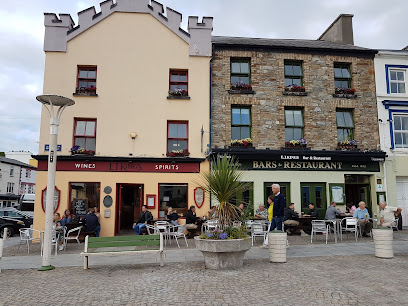
Veldons Seafarer Bar & Restaurant
Discover the charm of Veldons Seafarer Bar & Restaurant in Letterfrack, where local flavors and warm hospitality come together for an unforgettable dining experience.
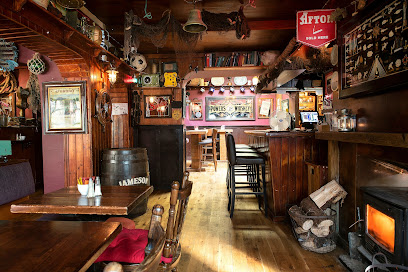
Lowry's Bar
Discover the heart of Clifden at Lowry's Bar, an Irish pub blending authentic cuisine, live music, and a warm atmosphere in the stunning Galway region.
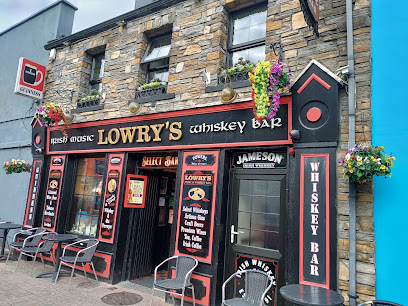
Mannions Seafood Bar & Restaurant
Discover the essence of coastal dining at Mannions Seafood Bar & Restaurant, where fresh seafood meets warm Irish hospitality in Clifden.
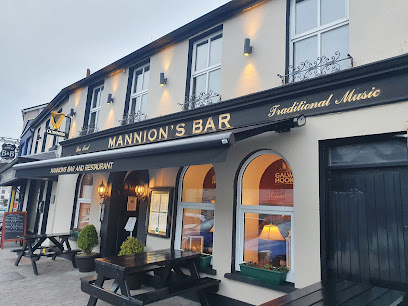
E J Kings Bar & Restaurant
Experience the vibrant atmosphere and delicious local cuisine at E J Kings Bar & Restaurant in Clifden, Co. Galway.

Paddy Coynes Pub
Discover the heart of Irish culture at Paddy Coyne's Pub, where traditional dishes and friendly faces await in the scenic County Galway.

Ravi's Bar and Resturant
Experience the best of Irish gastropub culture at Ravi's Bar and Restaurant in scenic Clifden, offering delicious dishes and a warm atmosphere.
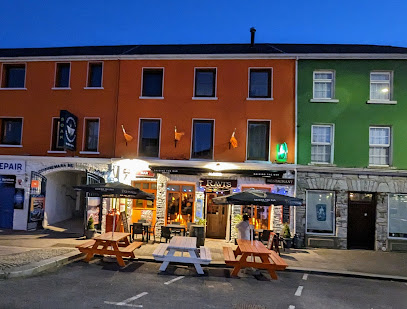
Griffin's Bar Live Music & Bar Food
Discover Griffin's Bar in Clifden, where lively music meets delicious bar food in a welcoming Irish atmosphere.
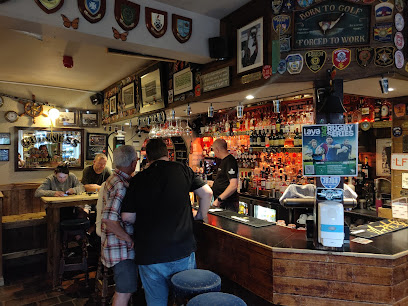
Anglers Rest Bar And Restaurant
Discover the charm of Anglers Rest Bar And Restaurant, where local cuisine meets stunning landscapes in Co. Galway.
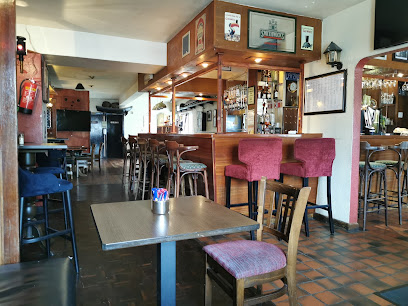
Molly's Bar
Experience the warmth of Irish hospitality at Molly's Bar in Letterfrack, where every visit is a celebration of local culture and community.
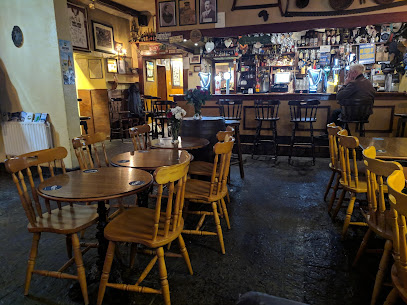
The Lamplight
Experience the flavors of Ireland at The Lamplight, Clifden's premier restaurant and wine bar offering exquisite dishes and a cozy atmosphere.
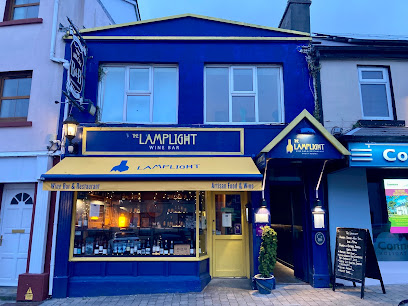
MC McGraths
Experience the warmth of Irish hospitality at MC McGraths, a vibrant pub in Clifden known for its hearty dishes, local brews, and live music.
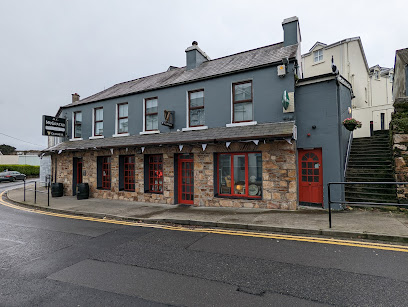
Joyce's Bar
Discover the heart of Irish hospitality at Joyce's Bar in Recess, Co. Galway, where every visit feels like coming home.
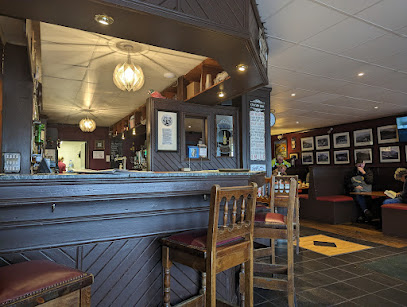
Vaughans Pub, Bistro And B&B
Experience authentic Irish hospitality at Vaughans Pub, Bistro And B&B in Clifden, where delicious food and cozy accommodations await.
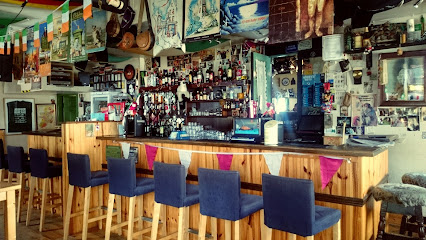
The Pier Bar Cleggan Connemara
Experience authentic Irish hospitality at The Pier Bar in Cleggan, where local flavors meet stunning coastal views.
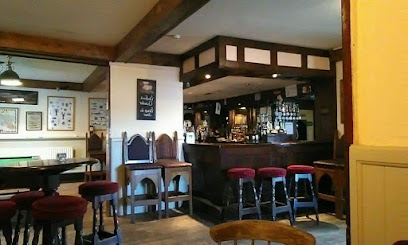
Local Phrases about Connemara National Park
-
- HelloDia dhuit
[Dee-ah gwitch] - GoodbyeSlán
[Slawn] - YesTá
[Taw] - NoNíl
[Neel] - Please/You're welcomeLe do thoil
[Leh duh hull] - Thank youGo raibh maith agat
[Guh rev mah agut] - Excuse me/SorryMaith thú
[Mah hoo] - How are you?Conas atá tú?
[Kun-us ah-taw too] - Fine. And you?Tá mé go maith. Agus tú?
[Taw may guh mah. Ah-gus too?] - Do you speak English?An bhfuil Béarla agat?
[On will bayr-lah ah-gut] - I don't understandNí thuigim
[Neel hug-im]
- HelloDia dhuit
-
- I'd like to see the menu, pleaseBa mhaith liom an miasnú, le do thoil
[Bah why luhm on mee-ass-noo, leh duh hull] - I don't eat meatNí ithim feoil
[Neel ih-him foh-il] - Cheers!Sláinte!
[Slawn-cheh] - I would like to pay, pleaseBa mhaith liom íoc, le do thoil
[Bah why luhm ee-uck, leh duh hull]
- I'd like to see the menu, pleaseBa mhaith liom an miasnú, le do thoil
-
- Help!Cabhair!
[Caw-er] - Go away!Imigh uaim!
[Im-ee oo-um] - Call the Police!Glan an Gharda!
[Glawn on gar-da] - Call a doctor!Glan dochtúir!
[Glawn duck-too-ir] - I'm lostTá mé caillte
[Taw may kyle-tuh] - I'm illTá mé tinn
[Taw may chin]
- Help!Cabhair!
-
- I'd like to buy...Ba mhaith liom ceannach...
[Bah why luhm kyann-uck] - I'm just lookingNíl mé ach ag féachaint
[Neel may ahk egg fay-ah-khent] - How much is it?Cé mhéad atá air?
[Kay vayd ah-taw air] - That's too expensiveTá sé ródhaor
[Taw shay row-dear] - Can you lower the price?An féidir leat an praghas a ísliú?
[On fay-djir lat on prah-guss ah eesh-loo]
- I'd like to buy...Ba mhaith liom ceannach...
-
- What time is it?Cén t-am é?
[Kayn tahm ay] - It's one o'clockTá sé a haon a chlog
[Taw shay ah hayn ah khlog] - Half past (10)Leathuair tar éis a deich
[Lah-hoo-ir tar aysh ah deh] - MorningMaidin
[Mah-din] - AfternoonTráthnóna
[Traw-no-na] - EveningTráthnóna
[Traw-no-na] - YesterdayInné
[In-ay] - TodayInniu
[In-yoo] - TomorrowAmárach
[Ah-mar-ahkh] - 1Aon
[Ayn] - 2Dó
[Doh] - 3Trí
[Tree] - 4Ceathair
[Kyah-hir] - 5Cúig
[Koo-ig] - 6Sé
[Shay] - 7Seacht
[Shakht] - 8Ocht
[Ukht] - 9Naoi
[Nee] - 10Deich
[Deh]
- What time is it?Cén t-am é?
-
- Where's a/the...?Cá bhfuil an...?
[Kah will on] - What's the address?Cén seoladh atá air?
[Kayn shohl-ah ah-taw air] - Can you show me (on the map)?An féidir leat liom a thaispeáint (ar an léarscáil)?
[On fay-djir lat luhm ah hash-pay-nt (ahr on layr-skawl)] - When's the next (bus)?Cén uair atá an chéad bhus?
[Kayn oo-ir ah-taw on khayd vuss] - A ticket (to ....)Ticéad (go dtí ....)
[Tick-aid (goh jee)]
- Where's a/the...?Cá bhfuil an...?
History of Connemara National Park
-
Connemara has been inhabited since prehistoric times, with evidence of early settlers dating back over 5,000 years. Archaeological finds such as megalithic tombs and stone circles indicate the presence of Neolithic communities who engaged in farming and hunting.
-
Around 500 B.C., the Celts arrived in Ireland, bringing with them a new culture and way of life. Connemara, known for its rugged landscape, became a stronghold for these early Celtic tribes. The region is dotted with remnants of Celtic fortifications and settlements.
-
The spread of Christianity in the 5th century saw the establishment of several monastic communities in Connemara. These monasteries became centers of learning and culture. The ruins of some early Christian sites, such as the church on Omey Island, remain as a testament to this period.
-
The Norman invasion of Ireland in the 12th century brought significant changes to the region. Connemara, however, remained relatively isolated due to its harsh terrain. The Normans built castles and fortifications, some of which still stand today, blending into the landscape.
-
From the 13th to the 17th century, Connemara was dominated by the O'Flaherty clan, a powerful Gaelic family. They controlled much of the land and were known for their fierce independence. The O'Flaherty castle ruins at Aughnanure are a notable site from this era.
-
The Great Famine of the mid-19th century had a devastating impact on Connemara. The region's population suffered greatly due to crop failures and subsequent starvation. Many families were forced to emigrate, leaving behind abandoned homes and fields, which can still be seen in the landscape.
-
Connemara National Park was established in 1980, encompassing nearly 3,000 hectares of scenic mountains, bogs, heaths, and woodlands. The park was created to protect the natural landscape and heritage of the region, providing a sanctuary for flora and fauna as well as a place of historical significance.
Connemara National Park Essentials
-
Connemara National Park is located in County Galway in the west of Ireland. The nearest major city is Galway City, which has bus and train connections to other parts of Ireland. The closest international airports are Shannon Airport (approximately 2.5 hours by car) and Ireland West Airport Knock (approximately 1.5 hours by car). From Galway City, you can take a bus to Letterfrack, the village nearest to the park, which is about an hour and a half bus ride.
-
Public transport options to Connemara National Park include buses from Galway City to Letterfrack. Car rental is a popular choice for visitors who want the flexibility to explore at their own pace. Biking is another great way to explore the park and its surroundings. Local taxis are available but may need to be booked in advance, especially in remote areas.
-
The official currency in Ireland is the Euro (EUR). Credit and debit cards are widely accepted, but it's advisable to carry some cash for smaller establishments and rural areas. ATMs are available in Letterfrack and other nearby towns, but it's a good idea to withdraw cash in Galway City before heading to the park.
-
Connemara National Park is generally considered a safe destination for tourists. However, standard precautions should be taken. Avoid leaving valuables in your car, especially in remote areas. There are no specific high-crime areas targeting tourists, but it's always best to stay vigilant and aware of your surroundings.
-
In case of emergency, dial 112 or 999 for immediate assistance. The nearest medical facilities are in Clifden, about a 20-minute drive from the park. It's recommended to have travel insurance that covers medical emergencies. Small first aid kits are available at the park's visitor center, and there are pharmacies in nearby towns.
-
Fashion: Do wear comfortable, weather-appropriate clothing and sturdy walking shoes. Layers are advisable as weather can change quickly. Religion: Respect local customs when visiting religious sites. Remove hats and stay quiet. Public Transport: Do be punctual and have the correct fare ready. Don't play loud music or eat on public transport. Greetings: A simple 'hello' or 'hi' is common. Handshakes are also widely accepted. Eating & Drinking: Do try local dishes and drink responsibly. Avoid excessive noise in pubs and restaurants.
-
To experience Connemara like a local, visit the traditional pubs in nearby villages for live music sessions. Engage with local residents who are often willing to share stories about the area's history and culture. Take part in guided walks organized by the park to learn more about the local flora and fauna. Don’t miss the opportunity to visit during the Connemara Pony Show if you're there in August.
Trending Landmarks in Connemara National Park
-
Kylemore Abbey & Victorian Walled Garden
-
Dunguaire Castle
-
Galway Atlantaquaria
-
Connemara National Park Visitor Centre
-
Rock of Dunamase
-
Dog's Bay
-
Aasleagh Falls
-
Coole Park
-
Ballynahinch Castle
-
Barna Woods
-
Aughnanure Castle
-
Abbeyglen Castle Hotel
-
Ballycroy Visitor Centre - Wild Nephin National Park
-
Rinville Park
-
Coole Park Nature Reserve
Nearby Cities to Connemara National Park
-
Things To Do in Salthill
-
Things To Do in Galway
-
Things To Do in Ennis
-
Things To Do in Sligo
-
Things To Do in Limerick
-
Things To Do in Athlone
-
Things To Do in Tralee
-
Things To Do in Dingle
-
Things To Do in Killarney
-
Things To Do in Kilkenny
-
Things To Do in Cork
-
Things To Do in Kinsale
-
Things To Do in Derry
-
Things To Do in Drogheda
-
Things To Do in Waterford

